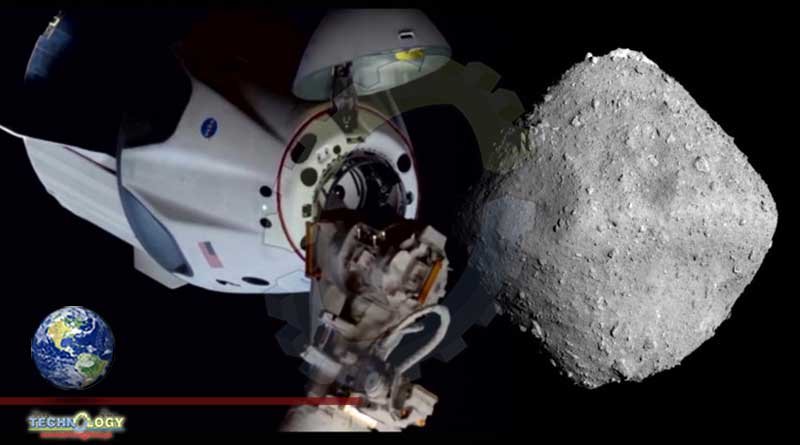SpaceX’s Crew-1 mission for NASA to the ISS to kick off some Rock-Eating Microbes and unique science experiments for the crew to work on.

The first operational commercial crew mission will not only bring astronauts to the International Space Station but also kick off some Rock-Eating Microbes and unique science experiments for the crew to work on.
The Crew Dragon capsule carrying four astronauts on SpaceX’s Crew-1 mission for NASA is expected to lift off from Kennedy Space Center in Florida on Saturday evening (Sat. 14), and you can watch coverage live at Space.com or on NASA TV. Participating crewmembers on the six-month flight are NASA astronauts Shannon Walker, Victor Glover and Mike Hopkins, and Japanese astronaut Soichi Noguchi.
Some of the experiments that the Crew-1 astronauts will tackle involve Rock-Eating Microbes, tests of key parts for future spacesuits and a student genetics project. A partial list of the mission’s experiments is below.
Food Physiology: Floating around for a few months can change a spaceflyer’s immune system. The Food Physiology experiment will therefore examine how dietary changes to orbiting astronauts can change or enhance their immune function, along with the “microbiome” (microbe composition) of their guts. The overall goal of the experiment is to improve spaceflight diet and crew health. The study is ongoing, and Crew-1 will bring resupply hardware to space for more work. During the Crew-1 mission, Glover is scheduled to collect biological samples of his body as a participant in the experiment.
Genes in Space-7: This student experiment, from Finsam Samson and Yujie Wang at Troy High School in Troy, Michigan, was one of the winning selections from the Genes in Space competition for students in Grades 7 to 12. The duo will study how brain function changes during spaceflight, with an aim to better help astronauts do their work on long-duration missions on the space station, the moon and other deep-space destinations.
SERFE and spacesuits: NASA is already thinking ahead to its next moon spacesuit, called the Exploration Extravehicular Mobility Unit (xEMU). Unlike the current NASA EMU used for spacewalks outside the orbiting lab, the newer generation of spacesuit will use water evaporation to remove heat from an astronaut’s body and to maintain a safe temperature during spacewalks. A key element of this system is the Spacesuit Water Membrane Evaporator, which is already aboard the station and will be tested on simulated spacewalks during the Crew-1 mission via the Spacesuit Evaporation Rejection Flight Experiment. The investigation will conduct 25 simulated eight-hour spacewalks to see how well the garment and technology work in space.
Plant Habitat-02: The ISS is gaining a reputation for its various orbiting gardens, and Crew-1 will add to previous research with lettuce, flowers and other plants. A recent commercial resupply mission from Northrop Grumman’s Cygnus spacecraft delivered radish seeds to the station, and the astronauts will grow them for the Plant Habitat-02 experiment inside the Advanced Plant Habitat. Future crews on long-duration missions will use plants for part of their diet, and radishes will be especially useful due to their nutritious nature and ability to grow quickly. Radishes are also similar to Arabidopsis, a plant that has been studied many times in microgravity.
BioAsteroid: Space station astronauts will take a close look at microbes that can interact with rocks, as part of the BioAsteroid experiment, which will launch on a SpaceX cargo mission Dec. 2. Potential future uses of this research could include creating life-support systems that use regolith (the dusty soil on the moon and small worlds), or breaking down the rocks into soils for plants to use, or extracting minerals from rocks. The hope is to find more uses of material on the moon, Mars or other destinations to help future crews build bases and ship fewer resources from Earth to save on transportation costs.
Tissue Chips: This unique biology experiment puts human cells on a thumb-sized 3D matrix, creating a sort of small, artificial organ that simulates organ functions. The Tissue Chips in Space experiment (which will also fly on the Dec. 2 SpaceX cargo flight) will examine how human cells respond and adapt to drugs, stress and genetic changes during spaceflight. The Crew-1 astronauts will study cells from human lungs, bone marrow, muscle and other organs. One major question investigators hope to address is how humans lose muscle mass in space after a few weeks or months in microgravity.
Cardinal Heart: Another organ affected by spaceflight is the heart, which is where the Cardinal Heart experiment, which will be delivered next month as well, will come in. The investigators will use engineered (artificial) heart tissues mounted on tissue chips to better understand cardiovascular risk before spaceflight, and to create strong countermeasures for heart conditions. The research is expected to benefit not only flying astronauts but also individuals on Earth at risk of cardiac disease.
Originally published at Space
